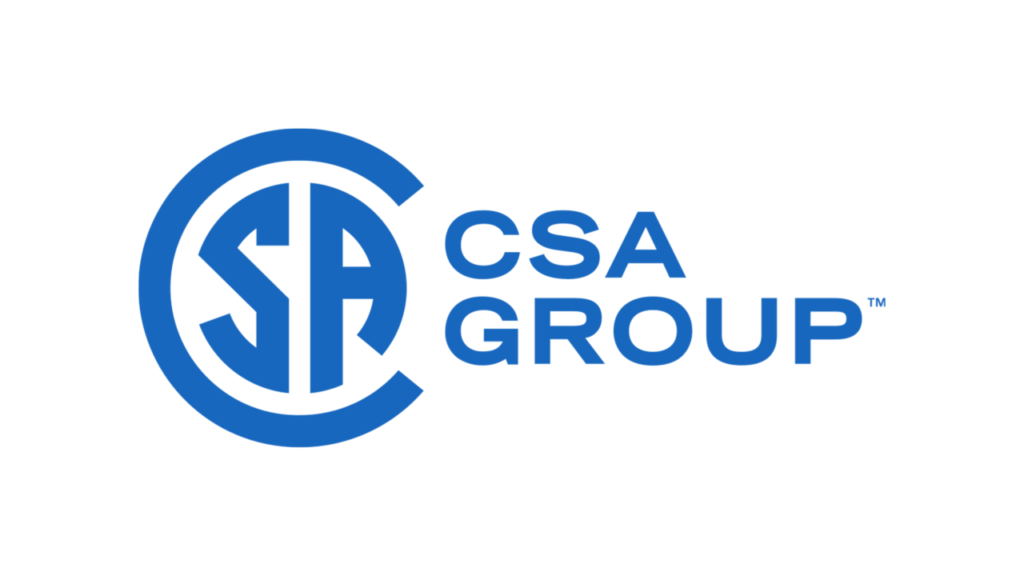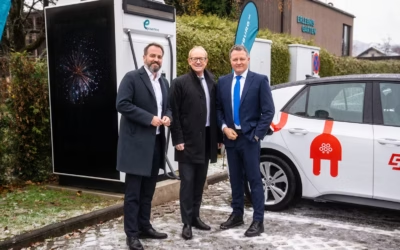
We caught up with CSA Group’s Scott Daniels (SD), head of energy and power and Michael Becker (MB), technical specialist – energy storage, to discuss battery energy storage safety, standards and performance testing.
With over 100 years of experience, CSA Group is a global expert in leveraging the expertise of 10,000+ volunteer members to facilitate the development of industry standards, testing, inspection and certification, all key processes to help deploy both standalone battery storage, electric vehicle (EV) batteries and EV charging equipment.
So, what standards apply for these batteries and how do they vary between the two applications?
What does the landscape of energy storage standards currently look like?
MB: In the US and Canada there are overarching standards that apply for battery storage, the first one of these being NFPA 855, which is for the installation of energy storage systems. This installation level standard addresses requirements pertaining to final installation features like component requirements, fire suppression, smoke detection and other features. NFPA 855 requires energy storage systems to be listed devices complying with the safety requirements of UL 9540. UL 9540 is the main safety standard for energy storage systems and the standard CSA Group utilises for our certification projects.
Try Premium for just $1
- Full premium access for the first month at only $1
- Converts to an annual rate after 30 days unless cancelled
- Cancel anytime during the trial period
Premium Benefits
- Expert industry analysis and interviews
- Digital access to PV Tech Power journal
- Exclusive event discounts
Or get the full Premium subscription right away
Or continue reading this article for free
UL 9540 is the main overarching umbrella standard that references other component standards. UL 9540 references testing requirements to UL 9540A, the test method specifying large-scale fire testing for these types of systems. UL 9540A is commonly required for systems above a certain energy threshold or close spacings between battery modules/racks. UL 9540 also requires that the battery system, which includes the battery modules and battery management system (BMS), be certified to UL 1973, the standard for safety of stationary battery systems.
SD: There’s also an aspect of performance testing where we provide testing services to determine an outcome along with reference performance testing where we test against a specification. Performance testing is often used to support research and development of smaller companies that have limited in-house testing resources. An example of a reference performance test is to validate the energy capacity of a battery system against a manufacturers specification.
How are standards for battery energy storage enforced?
MB: Enforcement of battery energy storage assets occurs at the local level by Authorities Having Jurisdiction (AHJ). These AHJs can include electrical inspectors, fire marshals, local municipalities and other code enforcement personnel. During the inspection of the installed energy storage system (ESS), the AHJ will ensure that it has been evaluated to appropriate safety standards and has a certification mark from an approved agency. Most of the new energy storage codes either reference NFPA 855 or adopt most of the requirements from that standard.
What about when it comes to EV batteries?
MB: Automotive companies design their products to meet standards specific to their industry such as those released by the Society of Automotive Engineers (SAE). These companies verify performance to these standards but don’t normally require a third party certification body, like CSA Group, to evaluate. However, some of these companies still request third party testing from companies like CSA Group to provide test reports showing their designs meet these performance standards.
SD The main standards to consider for EV battery applications include both UL 2580 and SAE J2464. Most of the electrical safety requirements are similar between standards that address stationary vs EV battery applications
One main difference in battery standards for EV applications is they consider mechanical hazards that are specific to their use. This can include mechanical vibration and shock testing, more severe thermal cycling tests and immersion testing.
Another main difference between some stationary battery and EV battery standards is the requirements for thermal runaway protection. EV battery standards usually focus on performance of the system with a smaller time scale, usually within an hour. Performance of the battery pack after an hour of initiating thermal runaway is not normally considered.
However, ESS standards have a longer timing requirement for these types of tests. Determination of a system after initiating thermal runaway is measured over a full 24 hour period.
MB: The new GB standard in China (GB/T 38301), which is starting to be adopted, has a five-minute performance requirement for thermal runaway testing meaning that once thermal runaway is initiated, you shall not have any hazardous conditions occur to a passenger within five minutes. You also need to signal to the passengers that there is an issue so that they can remove and distance themselves from the vehicle in time.
With ESS, these aren’t necessarily attended systems, so they can be installed in remote areas and remote buildings; however, since these systems may not be constantly attended, there’s higher risk that uncontrolled thermal runaway conditions can continue for a longer period.
How are standards evolving to match innovation in the battery energy storage sector?
SD: Battery energy storage is comprised of many technologies and ecosystems. Popular technologies include legacy lead acid, modern lithium-ion and emerging technologies such as sodium-ion, zinc, and molten metal among others. Most identify current battery ESS with lithium-ion based solutions and within the lithium-ion family of batteries there is rapid innovation resulting in numerous sub-categories of lithium-ion, including various cathode and anode chemistries along with novel cell designs and form factors.
This rapid innovation is focused on driving down costs, increasing performance and improving safety. At CSA Group we are closely following these technological advancements and continually adjusting our infrastructure to accommodate testing of these new technologies along with actively creating our own standards and influencing others. One of the most important things we do at CSA Group to align our technology and services with rapid innovation while aiming to provide excellent service to our customers is hiring and retaining highly skilled employees. Our employees are our most important asset.
We are now seeing standards that impact legacy battery technologies such as lead acid. Lead acid battery technology is very mature when compared to lithium-ion. While there is ongoing innovation in this space, we are only seeing incremental improvements. A new lead acid battery technology is going to behave very similar to one from 10, 20 or even 40 years ago. This doesn’t mean that standards aren’t changing and impacting these lead acid battery systems, thus requiring these systems to be tested and certified.
MB: When it comes to the regulatory landscape for energy storage, you have common standards such as UL 9540, UL 1973, and UL 9540A. These standards will most likely not be evolving substantially with advances in innovation. The standards are well built in a way where they can be flexible to accommodate different technologies in that space.
However, additional standards are being revised or released pertaining to other aspects of an ESS. One aspect being added to these systems is EV charging. Recently, a popular topic has been integrating energy storage with EV charging to provide faster charging rates to cars. This allows higher power charging rates without fully relying on the available power grid if it’s insufficient to provide full capability. With these resources becoming distributed energy aspects, there have also been increased efforts on advancement of cybersecurity standards and requirements. These systems are connected to external networks that can be exposed if there are gaps in their security.
Overall, standard development efforts in the energy storage space are focused on concerns related to new technologies pertaining to these systems, like interconnection and EV chargers.





